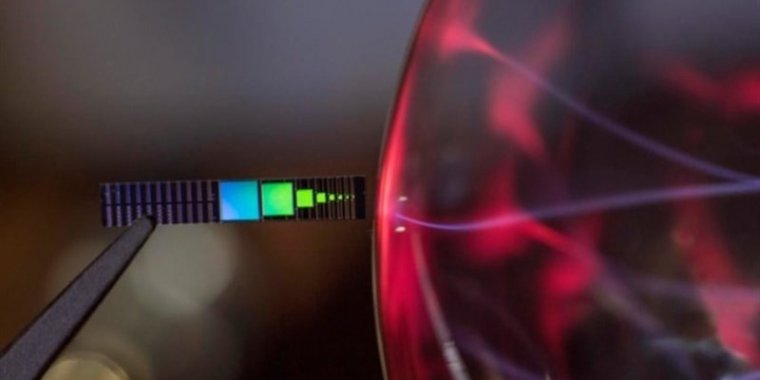| News / Science News |
Harvesting Electrical Power from Waste Heat
A tiny silicon-based device was created by researchers making them able to harness heat from waste and convert it to it into DC electrical power.

Harvesting electrical power from waste heat. ![]()
Directly converting electrical power to heat is easy. The opposite, converting heat into electrical power, isn't so easy.
Researchers from Sandia National Laboratories have developed a tiny silicon-based device that can harness what was previously called waste heat and turn it into DC power.
"We have developed a new method for essentially recovering energy from waste heat. Car engines produce a lot of heat and that heat is just waste. So imagine if you could convert that engine heat into electrical power for a hybrid car. This is the first step in that direction, but much more work needs to be done," said Paul Davids, a physicist and the principal investigator for the study.
"In the short term we're looking to make a compact infrared power supply, perhaps to replace radioisotope thermoelectric generators." Called RTGs, the generators are used for such tasks as powering sensors for space missions that don't get enough direct sunlight to power solar panels.
Davids' device is made of common and abundant materials, such as aluminum, silicon and silicon dioxide or glass combined in very uncommon ways.
Smaller than a pinkie nail, the device is about 1/8 inch by 1/8 inch, half as thick as a dime and metallically shiny. The top is aluminum that is etched with stripes roughly 20 times smaller than the width of a human hair. This pattern, though far too small to be seen by eye, serves as an antenna to catch the infrared radiation.
Between the aluminum top and the silicon bottom is a very thin layer of silicon dioxide. This layer is about 20 silicon atoms thick, or 16,000 times thinner than a human hair. The patterned and etched aluminum antenna channels the infrared radiation into this thin layer.
The infrared radiation trapped in the silicon dioxide creates very fast electrical oscillations, about 50 trillion times a second. This pushes electrons back and forth between the aluminum and the silicon in an asymmetric manner. This process, called rectification, generates net DC electrical current.
The team calls its device an infrared rectenna, a portmanteau of rectifying antenna. It is a solid-state device with no moving parts to jam, bend or break, and doesn't have to directly touch the heat source, which can cause thermal stress.
One of the biggest fabrication challenges was inserting small amounts of other elements into the silicon, or doping it, so that it would reflect infrared light like a metal.
The version of the infrared rectenna produces 8 nanowatts of power per square centimeter from a specialized heat lamp at 840 degrees. For context, a typical solar-powered calculator uses about 5 microwatts, so they would need a sheet of infrared rectennas slightly larger than a standard piece of paper to power a calculator. (Tasnim News Agency)
YOU MAY ALSO LIKE





